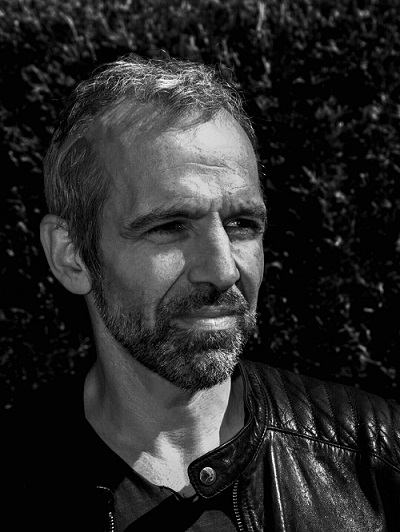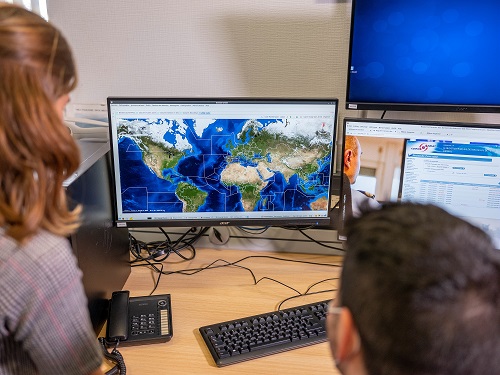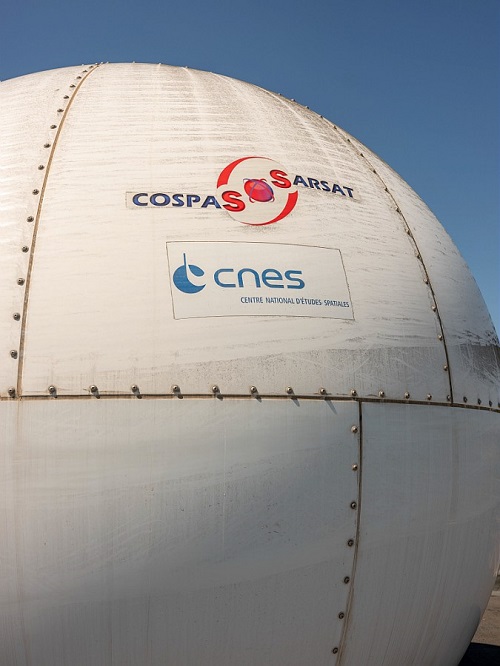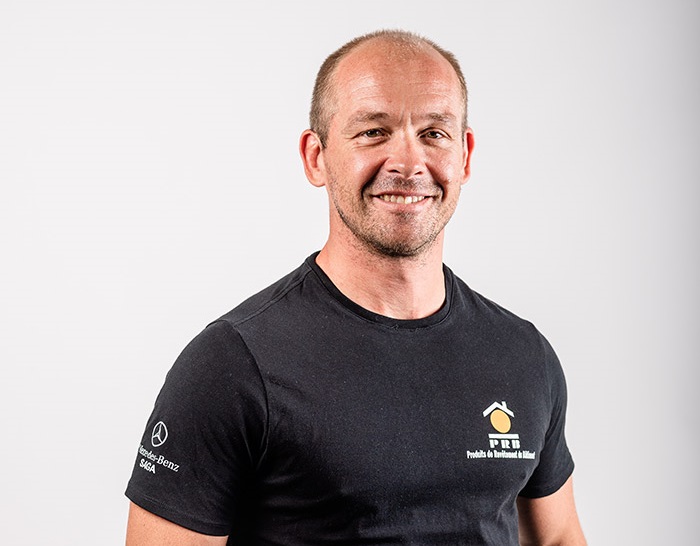CLS editorial staff met with Bruno Chazal, France’s representative for the international Cospas-Sarsat organization and Chairman of the organization’s Board.
Cospas-Sarsat is the satellite-based system for detecting and locating aeronautical, maritime and land-based distress beacons for search and rescue purposes. Operated and developed by the international organization of the same name, which brings together 43 countries and 2 organizations, its role is crucial: the system has helped save 52,000 lives since it was put into service during nearly 16,000 distress events worldwide.
But first, a little history
In 1988, it was still the Cold War. However, a remarkable organization was born under the impulse of 4 founding countries. Canada, France, the United States and the former USSR decided, together, to create an unprecedented satellite search and rescue system. Today, that organization has been operating for more than 30 years under the authority of a Council of which France has held the presidency since July 2020.

CLS: Hello Bruno Chazal. First of all, thank you very much for giving us this precious time. Could you tell us about your role within Cospas-Sarsat?
Bruno Chazal: Among my activities, I have been representing France within the international organization Cospas-Sarsat for five and a half years. The organization is made up of the “Parties”, the four founding countries: Russia, the United States, Canada and France, as well as 41 other countries and organizations. I was appointed to this position by the Ministry of Europe and Foreign Affairs (MEAE), which designated the CNES (Centre National d’Etudes Spatiales) as a “cooperating organization” with Cospas-Sarsat. However, the French delegation that I lead is made up, in addition to CNES, of the Direction Générale de l’Aviation Civile (DGAC) and the Direction des Affaires Maritimes (DAM), the “user” administrations that also manage the French mission control center of Cospas-Sarsat (FMCC).
I also work very closely with the MEAE, particularly on diplomatic issues and governance of the organization. It is therefore a very international role articulated with preparatory activities carried out both internally by CNES and inter-ministerially with the aim of taking the necessary decisions for the organization and giving it the necessary directions for its effectiveness and its future, and this in coherence with national policy in the sectors concerned.
France, with CNES, is indeed a historical and major actor of the program. It plays a role in governance and programming, as well as in technical and operational aspects. It is this dual role that gives it a particularly important place within Cospas-Sarsat and on the world search and rescue scene. This is an essential status with regards to the importance of national civil aviation and maritime issues given the size of the national maritime domain, the second largest in the world.
Since July 2020, I am also the Chairman of the Board of the Cospas-Sarsat organization. This is a prime position to set priorities and bring about decisions, through bilateral and multilateral negotiations, and by proposing relevant paths for the organization and for the systems it operates and develops. This is an exciting subject because the organization has been going through a particularly active period for several years, with a number of developments and challenges to be met.

CLS: Is it possible to speak in praise of diplomacy?
Bruno Chazal: I would say “technological diplomacy” since technological and systems choices, as well as strategic choices, are so intertwined.
Diplomacy is at the heart of all the relations deployed in my functions. It is specific to international relations in general, but also to the very essence of Cospas-Sarsat, its history and its particular purpose. It requires a lot of energy, dynamism, but also listening, a lot of imagination and strength of conviction, because the decision-making mode is that of consensus, which must already be reached between the four founding countries.
I think it is important to remember that this organization has gone through many political crises between the Eastern and Western blocs during the Cold War without being affected. It has remained a diplomatic showcase but also a link built around the shared objective of saving human lives. It is thus characterized by a shared search for the collective interest. However, the technical points of view as well as the operational constraints of each country may differ. The same may be true of diplomatic positions.
In short, there may be many ways to satisfy the collective interest and the challenge is to achieve their convergence. In this respect, Cospas-Sarsat is a privileged field of diplomacy.
CLS: Let’s now turn to the functioning of the system. What happens when a beacon emits a distress signal?
Bruno Chazal: When a beacon is activated, it sends a distress message at 406 MHz via the Cospas-Sarsat satellite system, which is then picked up by the ground segment antennas, spread across the globe. Each Cospas-Sarsat mission control center processes the data received by its own antennas to identify the beacon and determine its location, and shares this with other global control centers, including the one in the country where the beacon is registered and the one where the distress is located. In the end, the file is transmitted to the most relevant rescue coordination center. Cospas-Sarsat’s mission then ends.
CLS: Would you like to explain the role of CLS?

Bruno Chazal: CLS operates the French Cospas-Sarsat Mission Control Center (FMCC), hosted at CNES (Centre National d’Etudes Spatiales) in Toulouse, a control center under the responsibility of the Direction des Affaires Maritimes (DAM) and the Direction Générale de l’Aviation Civile (DGAC).
CLS manages immediate assistance situations for the MCCF, works in collaboration with other mission control centers around the world and, if necessary, transmits alerts to the Rescue Coordination Centers (RCCs) that may intervene. CLS teams are assigned by the French administration and also collaborate with the CNES.
24 hours a day, 8 experts from the CLS teams manage the reception of alerts, precisely analyze the signals received, in interaction with the operational teams of other mission control centers, and transmit to the rescue centers the distress signals validated by their analysis, along with the information useful for rescue operations, in particular the distress location information. This is a job where the added values are technicality, reactivity and a sense of discernment, and therefore experience.
CLS: A worldwide search and rescue system, therefore of public interest, which has already saved tens of thousands of lives, a mission at the service of France that contributes to the influence of our diplomacy throughout the world. A magnificent international success.
But tell us, Bruno Chazal, what are the changes in the system? The CLS editorial staff has been told that under your presidency the Cospas-Sarsat system has taken on a new dimension?
Bruno Chazal: Let’s rather say that my presidency, like the previous one, comes at a key period for Cospas-Sarsat, and probably the most active and exciting, if I exclude that of the creation of the system by the pioneers of the program in the late 70s. Because, before the formalization of the international organization in 1988, the system was already initiated on the basis of a cooperation between state agencies, including CNES. Going back to a more recent period, 2016 was a pivotal year, a year of innovation for the program with the integration of Search and Rescue (SAR) payloads carried on satellites of the GPS, Galileo and Glonass constellations in medium orbit, into the new Cospas-Sarsat MEOSAR (Medium Earth Orbit Search and Rescue) system. This system will complement the LEOSAR (Low Earth Orbit Search and Rescue) and GEOSAR (Geostationary Orbit Search and Rescue) systems.

With the entry into the MEOSAR payload round, a new era is opening up for Cospas-Sarsat: the ability to provide precise location of beacons in near-real time and with global coverage. The system is now operational, and the ground segment is currently being upgraded to give it its full potential in terms of coverage and performance. The Galileo SAR service, supported by the European Commission, is making a significant contribution to this remarkable contribution, with the provision of a return path to the beacon to acknowledge receipt of the distress signal by the system. New services, not yet operational, are also under discussion, such as the ability to exchange messages with the person in distress. I think that these are also important for the evolution of the system.
Finally, in addition to MEOSAR, the major challenges for Cospas-Sarsat are the finalization of ELT(DT) beacons – aeronautical distress tracking beacons – which will meet the needs of the ICAO (International Civil Aviation Organization), expressed following the tragedies of the Rio – Paris flights AF447 and MH370 of Malaysia Airlines. The aim is to specify and develop beacons that will be triggered on the basis of flight parameters considered as abnormal in order to follow the aircraft as soon as it is triggered, and no longer at the time of impact on the ground or at sea. The entire ground segment of the system will also have to be updated in order to process these beacons. The second generation of beacons will also constitute a significant advance, this time for all uses, with increased coding capacities and even better location accuracy.
The intergovernmental nature of Cospas-Sarsat gives it a legitimacy which, combined with the robustness of its system and in particular of its ground mesh network, gives it a unique position in the field of locating distress and transmitting it to search and rescue authorities.

CLS: And if we had to look back at a recent rescue, which one would you remember?
Bruno Chazal: Without hesitation, the one of Kevin Escoffier in the last Vendée Globe sailing race, with a remarkable rescue chain that was put in place when his boat had just sunk in the not-so-favorable latitudes of the Roaring Forties on November 30.
A happy ending as Kevin Escoffier was rescued safely by Jean Le Cam, another Vendée Globe competitor. A beacon was triggered, the only link to life at a crucial moment and the starting point of an extraordinary human sequence.
You know, on average seven lives are rescued every day thanks to Cospas-Sarsat and, beyond this media event, women and men are mobilized every day in similar human chains that are organized and deployed to save lives, up to the rescuers who work on the ground to carry out this mission.
Bruno Chazal – Short Biography
After graduating from CentraleSupélec, Bruno Chazal went to Boston to study business and management at the prestigious Harvard Business School, where he met some outstanding personalities. After starting his career in the military engineering corps, where he conducted technical studies in the context of international cooperation, projects and economic development activities within various ministries, he joined the space industry and CNES in 2001 to take charge of R&D, and then to assume responsibilities for programs and industrial policy. He also set up and coordinated within CNES the preparation of the French space program at ESA for three years, decided at the European ministerial council in late 2019. His inclination for international relations, strategic issues and human values led him to join Cospas-Sarsat in late 2015.
Bruno Chazal loves the sea, the mountains, aeronautics and space. He is a meditation and yoga enthusiast, and also enjoys music, photography and literature, especially poetry. He is the proud father of 3 children whom he has raised in alternating custody since their youngest age.



